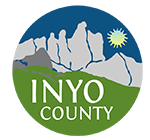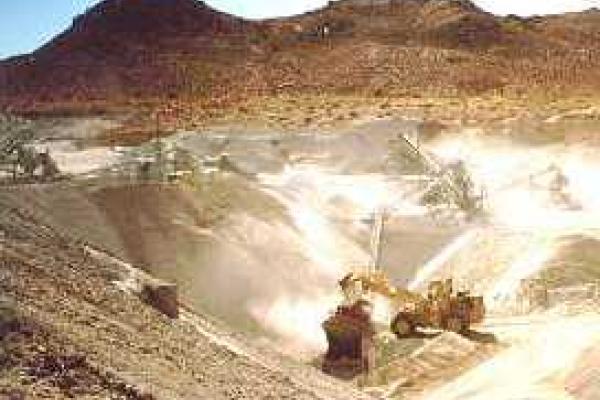Surface Mining and Reclamation Act (SMARA)
SMARA
Inyo County is the Lead Agency for the processing of surfacing mining reclamation plan applications. Reclamation plans are required by the Surface Mining and Reclamation Act of 1975 (SMARA). Reclamation plans assure that:
- Adverse environmental effects are prevented or minimized and mined lands are reclaimed to a useable condition readily adaptable for alternate land uses.
- Production and conservation of minerals are encouraged, while considering recreation, watershed, wildlife, aesthetic, range and forage values.
- Residual hazards to public health and safety are eliminated.
Reclamation may extend to affected lands surrounding the mined lands, and may require backfilling, grading, resoiling, revegetation, soil stabilization or other measures.
All surface mining operations that disturb greater than one acre or move more than 1,000 cubic yards or more are required to have an approved reclamation plan before the start of mining activity.
SMARA also requires that financial assurances must be posted to cover the cost of final reclamation.
The Planning Department takes the lead in the processing of reclamation plan applications and financial assurances. The Department is responsible for reclamation on private lands, Inyo County’s Road Department, City of Los Angeles, and California Department of Transportation borrow pits, and surface mining on federally administered lands.
The Inyo County Planning Commission conducts a public hearing and considers all comments in making their decision on each reclamation plan application as provided by the Inyo County SMARA Ordinance.
Q. Does the County have mining regulations?
A. Yes… Under the Surface Mining and Reclamation Act of 1975 (“SMARA”, Public Resources Code, Section 2710 et seq.), counties and incorporated cities were given the responsibility (lead agency status) to issue a Mining Conditional Use Permit (CUP) and/or approve a Reclamation Plan for surface mining operations within their jurisdictions. Inyo County's policies and ordinances regarding mining can be found in Title 7, Chapter 7.70 of the County Code.
Q. Does SMARA apply to mining on federal lands?
A. Yes... SMARA applies to both federal and non-federal lands where the local agency has adopted a surface mining ordinance. SMARA is not pre-empted by federal law because it regulates concerns not covered by federal law. The local lead agency under SMARA is required to consider both a mining permit and a reclamation plan for any new surface mine, and review the whole of this activity pursuant to the California Environmental Quality Act (CEQA). Section 3809.3-1 of the Federal Land Policy and Management Act (FLPMA) recognizes the state's responsibility in administering SMARA on federal land. In addition, both the Bureau of Land Management and the U.S. Forest Service have signed a Memorandum of Understanding (MOU) agreement with the California Department of Conservation and the State Mining and Geology Board for the implementation of SMARA on federal lands by local lead agencies. If your operation lies on federal land and exceeds the thresholds described below, you are required to obtain Reclamation Plan approval from the County before initiating operations.
Q. When is a Mining Conditional Use Permit or Reclamation Plan Required?
A. SMARA established thresholds of one acre of surface disturbance and/or a surface excavation of 1,000 cubic yards. Mining operations that exceed either of these thresholds are required to obtain a Mining Conditional Use Permit and/or a Reclamation Plan approval from the County prior to initiating operations. For underground mines, these thresholds apply to any surface disturbance activities associated with the underground development including access to the mine, ore and overburden stockpiles and milling. You should be aware that SMARA has exempted certain types of mining operations. Please refer to SMARA Section 2714 and determine if your proposed activity is consistent with one of these exemptions.
Q. What kind of zoning allows for a mining operation?
A. In recognition of the fact that minerals are only found where they naturally occur, mining is permitted within most land use districts, subject to Planning Commission approval. Mining operations with accessory manufacturing processes may be limited if they occur in or within one-half mile of any residential land use district.
Q. Does an Environmental Impact Report (EIR) have to be prepared for every mining operation?
A. No… All mining projects undergo an environmental review per the requirements of CEQA at the onset of project application processing. The environmental review will evaluate the project's potential environmental impacts and determine if an EIR is necessary. In most instances, a project's environmental impacts can be mitigated below a level of significance, thereby avoiding the need to prepare an EIR. Surface mining operations that include a cyanide heap leach process, for the purpose of producing gold or other precious metals, automatically require the preparation of an EIR.
Q. What is a metallic mine?
A. A metallic mine is defined as one where more than ten percent of the mining operation’s gross annual revenues, averaged over the last five years, are derived from the production of metallic minerals. A complete list of metallic minerals is found in Section 3704.1(f) of the California Code of Regulations.
Q. Do I have to backfill mine excavations?
A. In some cases… SMARA Section 2773.3 prevents a lead agency from approving a reclamation plan for a surface mining operation to extract gold, silver, copper, or other metallic minerals unless the reclamation plan provides for the backfilling and contour grading of the mined lands to an elevation that utilizes all of the available material remaining at the completion of mining.
Q. Do I have to revegetate when done with mining?
A. In most cases… Revegetation is required during reclamation unless it is not consistent with the approved end use of the site. The vegetation used must be similar to the surrounding area and capable of self-regeneration without continued dependence on irrigation, soil amendments or fertilizer. Vegetation is important in stabilizing disturbed surfaces against the effects of long-term erosion. Evaluating test plots during mining is strongly encouraged and will help develop the best method that will ensure a successful plan to revegetate the entire site when mining is completed.
Q. How long does it take to process a Mining Conditional Use Permit and/or Reclamation Plan?
A. Depending on available staffing, workload, and other priorities, the process can be completed in three to nine months. In the event that an EIR is required, the review process can take up to a year or more.
Q. How much does it cost to process a mining application?
A. The County's fee to process a mining application is based on the actual cost to review the project. The cost for a project is based on the time spent by staff to review the project, department overhead, coordination with State and Federal agencies and other expenses (i.e. copy costs, public hearings, additional permits) incurred during review of the project. An initial deposit is required as part of the application submittal and establishes a job account to which review expenses are charged against. The amount of the initial deposit may be determined by reviewing the first page of the County's Mining and Land Reclamation Plan application. On average, a Reclamation Plan application costs $3,500 to $9,000 to complete, while a Mining/Reclamation Plan application typically runs between $10,000 and $19,000 to complete.
Do I need to provide financial assurances for my operation once it is approved?
A. Yes... SMARA requires that each operator provide financial assurances for reclamation of the entire operation in accordance with the approved Reclamation Plan. The assurance is to be in the amount that covers the County’s cost for reclaiming the mine site in the unlikely event that you are unable to complete reclamation. Financial assurances may be in the form of surety bonds, irrevocable letters of credit, and certificates of deposit. The financial assurance is to be established and approved prior to initiating operations and is required to undergo a review by the County every year.
Q. Are annual reports and inspections required of all operations?
A. Yes… All operators are required to submit a Mining Operation Annual Report to the Department of Conservation and the County accompanied by the appropriate fee by July 1st each year pursuant to SMARA Section 2207. Mine operators must submit a copy of the entire annual report, including production information, to the State and the County. Please note that SMARA Section 2207(g) prohibits the release of production information to any member of the public. In addition, lead agencies are required to conduct an inspection of each surface mining operation within six months of receiving its respective copy of the annual report, and in no event less than once in any calendar year. These inspections must be conducted by a qualified inspector experienced in land reclamation using the inspection form developed by the Department of Conservation and approved by the State Mining and Geology Board. SMARA allows lead agencies to collect reasonable fees to cover staff time and expenses to conduct the annual inspections.
Q. How do I close the mine?
A. Ultimately, when the mine operator, the lead agency, and the Department of Conservation all agree that reclamation is complete in accordance with the approved reclamation plan. Section 3805.5 of the California Code of Regulations describes, in greater detail, the responsibilities of a lead agency and the Department of Conservation with respect to the release of financial assurances and final closure.

